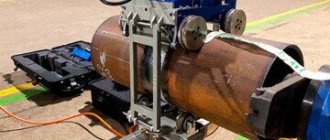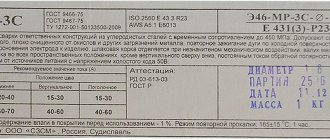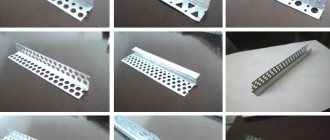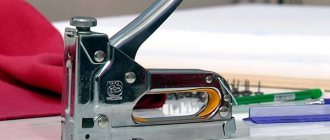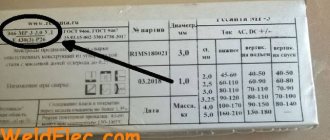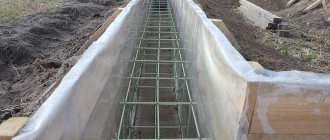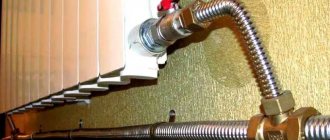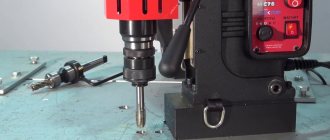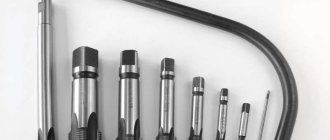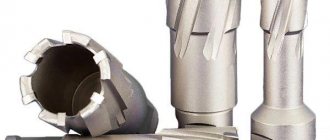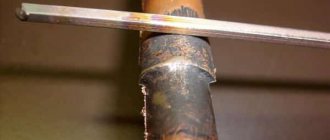Recently I wrote an article about making a mold for artificial decorative stone from silicone, but today I want to tell you how to make a polyurethane mold with your own hands, because... the process is a little different. When pouring silicone molds, everything always turned out smoothly - the molds came out without bubbles. With polyurethane it’s the other way around, and before I started getting high-quality forms, I screwed up about 10 forms.
What is needed to make a mold
To make a polyurethane mold of high quality, you need to make a good matrix. You can read how to assemble the matrix here. You will also need the polyurethane itself for filling the molds, a bucket, a kneading stick (or a screwdriver with a mixer), a plastic spatula (I made it from the lid of a plastic bucket), scales and lubricant. I use BC-M wax release agent as a lubricant. You can also take a soap solution, shake it to form foam and use it to treat the matrix, but personally, I like BC-M better.
And of course, you need a room with low humidity and room temperature. Although, to be honest, I filled the molds at only +5 degrees. Polyurethane is not as fluid at this temperature, but I had no other conditions.
Features of receiving
The process of making polyurethane is labor-intensive. Using expensive equipment, the following components are heat treated and mixed:
- polyol;
- isocyanate;
- polyetheramines.
The material is made by casting, pressing, extrusion. Raw materials for it can be found only in some countries: Russia, Italy, USA and Germany.
It is used to provide people with tires, mattresses, insulation, bags, shoes, finishing elements (cornices, ceiling plinths, stucco) and many other necessary things.
How to make a polyurethane mold. Instructions
First of all, the matrix needs to be dried, because There may be moisture left on it (which is not felt at all) and it was because of this moisture that I had a bunch of bubbles on the back of the mold. I take a hair dryer and dry it for 3-5 minutes. But you need to dry it so that the stone does not heat up too much, because... The silicone on which it is glued may heat up. After drying, after about 5 minutes, when the stone reaches room temperature, you can apply a release agent. I do 2 layers with an interval of several minutes. I take BC-M and spray it at a distance of 20-30 cm into all areas of the matrix, at different angles. One can is enough for me for 2 molds with an area of ~0.2 square meters. meters. Next you need to dilute the compound, but first we determine its quantity.
Read also: How to make a dryer for gypsum decorative stone
How to find out how much polyurethane you need?
Take the finished matrix with the bars screwed on (preferably before treatment with a release agent) and pour something loose into it. I saw on YouTube how a guy pours wheat and thus determines the volume of the compound. I would recommend using something smaller, such as rice, buckwheat or millet. And he also says there that the bottom of the mold should be 1-1.5 cm thick - I think this is unnecessary. Only 5 mm is enough to get a normal product, but for my forms I generally do 3 mm - and this is quite enough.
So, we find the tallest stone in the matrix, measure its maximum thickness (height), add 5 mm and make a mark on the side of one of the bars. Then we fill the millet exactly along this mark and level it. Then we pour everything into some kind of container and measure the volume, namely volume, not weight, because, for example, buckwheat and millet will have different weights. To count, you can use measuring cups or 0.5 liter glass jars. Let's say you get 2.5 liters - this will be the volume of the compound. For a mold of 0.2 square meters with a stone thickness of about 1 cm, it turns out to be 2.5 kilograms. Do not forget that this is an approximate calculation and it is better to play it safe by adding 300-500 grams of polyurethane.
I also want to say about the distance between the tiles in the matrix. Ideally this is 1 cm, but in order to save money you can do less. For thin bricks I make 6 mm between tiles and 8 mm around the perimeter. For thicker ones 8 and 1 cm respectively.
Let's start filling
First, slowly (so that there are no air bubbles) stir both components with a stick for 2-3 minutes. Then take a clean bucket, measure out component A and pour the required amount. Depending on the brand of polyurethane, the number of two components may be different, some use 2 to 1, others 1 to 1. I use Silagerm 5045, it is diluted 2 to 1. I take 2 parts of component A - 1666 grams and 1 part of component B – 833 grams, total 2500 grams or 2.5 kg.
Read also: Silagerm 5045 vs Advaform 40
Then I add component B and start kneading until smooth for 2-3 minutes. You can knead with a stick or a drill with an attachment at low speed. The polyurethane must be stirred well, carefully passing along the bottom and walls.
The matrix should be level and after that you can fill in our mixture. It is better to fill in one point in the center, in a thin stream. If the temperature of the compound and the room is 20-25 degrees, then the compound will spread on its own; if it is less, then you can help it with a spatula, as I do. If the polyurethane does not flow well, then it is most likely cold. The components can be preheated, but only individually. It is absolutely impossible to do this in a mixed state , because... high temperature affects the curing speed. After the mixture has been leveled on the matrix, and this is about 1-2 minutes, we take a hairdryer, turn it on to maximum and, at a distance of 2-3 cm from the poured compound, we pass over the entire surface from above - this way we will expel the air as much as possible. The liquid polyurethane from the hair dryer will “float” and air will escape.
Properties and technical characteristics of the material
The most common material today is polyurethane.
What it is, what advantages it has, you already know. Now let's look at the technical characteristics of this substance. So, the presented material can safely work in an aggressive environment, while its quality properties practically do not change. In addition, the substance works well in a fairly wide temperature range: from -60 to +80 degrees. Sometimes it can be heated to 120°, but this process should not last long, otherwise the material will simply collapse.
The polymer is able to withstand heavy loads and is less susceptible to aging than other substances. It is resistant to wear, moisture, temperature changes, sunlight, salt, and organic solvents. Polyurethane (you already know what it is) is considered a very durable material. Moreover, its elasticity can be programmed during the production process. This material may have different characteristics, which determine the scope of its application. It should be noted that polyurethane can consist of one or more components.
Forming methods
The buyer requires a functional product that has certain properties. To achieve this, processing methods are used that are similar to those used with all plastics.
Extrusion
Polyurethane polymer is excellent for injection molding. Under pressure, the heated and softened material is fed into the outlet of the extruder. Hardening occurs in this same zone. As a result, the output is a rod with a given cross-section or a flat sheet. The resulting rolled product is cut or rolled into rolls.
Casting
This method is the most common. It is used to manufacture products with complex geometries: bushings, supports, cuffs, seals, hydraulic elements and bearings. The advantage is easy automation of the process and the ability to produce large batches. For the manufacture of piece parts, the dimensions of which can be up to several tons, casting is used on a bench. The softened mass is poured into the frame, followed by hardening and acquiring a stable shape.
To speed up the process, increased pressure is used in automatic lines. The method differs little from the technology of products made from any plastic. It is often necessary to coat a metal workpiece with polymer. Then softened polyurethane is applied manually or under computer control to the item. As it cools, the layer becomes elastic and creates a protective film.
Pressing
The prepared material (sheet, rod or granular) is fed to the apparatus, where it is shaped using extreme pressure in a limited space. The process may be accompanied by preheating or softening of the substance due to compression. This produces a part with changed properties and a clearly defined geometry. In production, this action is controlled using software.
Fill
To produce artistic or piece goods, the natural casting method is used. Liquid material is placed manually into the prepared mandrel. Under the influence of high temperature or reagents, the device freezes, maintaining the required configuration. In this way you can make a small series of any blanks. More often used for the manufacture of large forms and decorative elements.
Areas of application
Two-component injection molding polyurethanes are used for a variety of applications, from casting gears to creating jewelry.
Particularly significant areas of use of this material are the following:
- refrigeration technical equipment (cooling, thermal insulation of commercial refrigeration equipment and household refrigerators, freezers, warehouses and food storage);
- transport refrigeration equipment (cooling and thermal insulation of automobile refrigeration units, isothermal railway cars);
- construction of quickly erected civil and industrial facilities (thermal insulating properties and ability to withstand the load of rigid polyurethanes in the structure of sandwich panels);
- construction and overhaul of residential buildings, private houses, mansions (insulation of external walls, insulation of roof structure elements, window openings, doors, etc.);
- industrial civil construction (external insulation and protection of the roof from moisture using rigid polyurethane spraying);
- pipelines (thermal insulation of oil pipelines, insulation of pipes in low-temperature environments at chemical enterprises by pouring under a pre-installed casing);
- heating networks of cities, towns, and so on (thermal insulation using hard polyurethane of hot water supply pipes during new installation or during major repairs using various technological methods: spraying and pouring);
- electrical and radio engineering (giving wind resistance to various electrical devices, waterproofing contacts with good dielectric characteristics of rigid structural polyurethanes);
- automotive industry (molded elements of car interior design based on thermoplastic, semi-rigid, elastic, integral polyurethanes);
- furniture production (creation of upholstered furniture using foam rubber (elastic polyurethane foam), decorative and cabinet components from hard polyurethane foam, varnishes, coatings, adhesives, etc.);
- textile industry (production of artificial leather, composite fabrics based on polyurethane foam, etc.);
- aviation industry and car construction (products made of elastic polyurethane foam with high fire resistance, manufactured by molding, noise and heat insulation based on specialized types of polyurethane foam);
- mechanical engineering industry (products made from thermoplastic and specialized grades of polyurethane foam).
The properties of 2-component PU make it possible to use them for the production of varnishes, paints, and adhesives. Such paints and varnishes and adhesive compositions are stable to atmospheric influences and hold tightly and for a long time.
Liquid elastic 2-component polyurethane is also in demand for creating molds for castings, for example, for casting concrete, polyester resins, wax, plaster, and so on.
Polyurethanes are also used in medicine - removable dentures are made from them. In addition, you can create all kinds of jewelry from PU.
In certain areas, products made from PU have superiority even over steel in a number of characteristics.
At the same time, the ease of creating these products makes it possible to create both miniature components weighing no more than a gram, and bulky castings weighing 500 kilograms or more.
In total, there are 4 areas for using 2-component PU mixtures:
- strong and rigid products, where PU replaces steel and other alloys;
- elastic products - this requires high plasticity of polymers and their flexibility;
- products resistant to aggression - high stability of PU to aggressive substances or abrasive influences;
- products that absorb mechanical energy through high viscosity.
Finally
This could have been the end of writing the instructions, but it happens that air constantly escapes in 1-2 places, the balloon bursts, but inflates again. This can happen because either there is a small gap under the stone, or there is a “shell” in the stone itself. In this case, I take a regular needle, insert it into the place where the air is coming from and sharply pull it out. If necessary, you can do it several times. Sometimes it helps, sometimes it doesn’t.
It is better, of course, to use a vacuum chamber when filling to avoid defects, but this is an expensive pleasure. And it’s only suitable for those who make molds for sale. Well, I want to give one piece of advice: if you are going to make yourself a decorative stone and the question arises about the shapes, whether to buy it or make it yourself, then I would recommend buying it, because... When manufactured without a vacuum chamber, there is a high probability of defects. If you plan to produce and need a lot of molds, you can make it yourself, but I assure you, there will be 100% defects.
Read on: how to make a dryer for decorative stone
Benefits of switching to polyurethane for car suspension
For more than 20 years, polyurethane shock absorbers, bushings and cushions have been used in the design of car suspensions, which allows them to achieve excellent quality compared to rubber. But the cost of such parts is more expensive.
Therefore, the main application of polyurethane is tuning the suspensions of armored cars, SUVs, and sports models.
What characteristic benefits can be obtained from polyurethane?
The use of such material in suspensions and transmissions, under any operating conditions, ensures the preservation of the shape of the suspension and controlled handling of the vehicle. The driving experience is smooth and enjoyable.
Replacing rubber products with polyurethane analogues The issue of rapid wear and aging of original rubber parts is radically resolved.
The resistance of suspensions to fresh and sea water, oils, gasoline, alkalis, acids, and chemicals for treating winter roads is increasing.
Long-term preservation of elasticity in a huge range of operating temperatures, resistance to deformation under power loads, peeling and freezing, in comparison with rubber.
During shock loading, the return is only 30-35% of the energy received, the main 70% turns into heat and dissipates (each silent block is a shock absorber).
Comparison of physical and mechanical properties of polyurethane and rubber
| Indicator name | Value for polyurethane | Value for rubber |
| Shore hardness (Sh), scale A | 20-98* | 64-78 |
| Elongation at break (%) | 54 | 202 |
| Tensile modulus 100% | 29 | 13 |
| Permissible tensile strength (kg/cm²) | 311 | 116 |
| Rebound Elasticity (%) | 40 | 29 |
| Frost resistance coefficient based on elastic recovery after compression at a temperature of minus 50 degrees Celsius | 0,46 | 0,23 |
| Tear strength (method C) N/mm | 59 | 21 |
| Abrasion resistance | 11 | 2 |
* This parameter can be adjusted during production at your discretion.
Economic benefits
On average, the service life of high-quality rubber joints during heavy vehicle operation ranges from 8 months to a year. If polyurethane is used in the suspension, then this period increases 5 times, which means that at a price that is equal to the cost of the “original” made of rubber, you get significant savings on car repairs. If you have to change the entire structure of the silent block, complete with shock absorber, rod, lever, it is even cheaper to manufacture custom-made polymer products.
Application of injection molding polyurethane
Two-component injection molding polyurethanes are used for a variety of purposes: from casting gears to making jewelry.
The good performance properties of parts made from such materials allow them to be used in fairly harsh conditions. These parts are chemically resistant, have good hardness and toughness. They may be:
- various shafts, gears, pulleys - due to good strength characteristics and high wear resistance, these parts serve for a long time and with high quality;
- wheels for loaders and carts: such wheels are stronger than rubber ones and can work even with serious tread damage;
- rollers – for example, guide and support rollers for conveyors and conveyor belts;
- toothed transmission belts, tracks and tracks - they are stronger than rubber and last longer;
- sealing elements, shock absorbers, etc. - due to higher strength and wear resistance, replacing rubber parts with polyurethane ones is quite advisable. At the same time, the elasticity of the part remains at the same level;
- couplings, bushings, bearing parts;
- various protective coatings;
- pipelines – excellent chemical resistance together with mechanical strength allows the production of both integral pipeline elements and the protection of pipelines from the outside or inside.
The properties of two-component polyurethanes allow them to be used for the manufacture of paints and varnishes and adhesive compositions. Such varnishes, paints and adhesives are resistant to atmospheric influences and last a long time and are durable.
Liquid elastic two-component polyurethane is also popular for making molds for further castings, for example, for casting from plaster, wax, polyester resins, concrete, etc.
Polyurethanes are also used in medicine - removable dentures are made from them. You can also make various jewelry from polyurethanes.
Even self-leveling floors can be made from polyurethane - such floors are highly resistant to wear and durable.
In some areas, parts made from polyurethane surpass even steel in a number of parameters.
At the same time, the ease of manufacturing such parts allows us to produce both miniature complex parts weighing up to a gram, and massive castings weighing 500 kilograms or more.
In general, four areas of application of two-component polyurethane mixtures can be distinguished:
- rigid and durable parts where polyurethanes replace steel and other metals;
- elastic parts – high elasticity of polymers and their elasticity are in demand here;
- parts resistant to aggressive influences - high resistance of polyurethanes to aggressive substances or abrasive influences;
- parts that absorb mechanical energy due to high internal friction.
In practice, a complex of directions is often used, since several valuable qualities are required from many parts at the same time.
Foamed polyurethane production technology
The production of polyurethane foam is nothing more than mixing liquid isocyanate and polyol. In this case, it is necessary to maintain proportion. The result of mixing is a foamy, airy mixture, which, when hardened, forms polyurethane foam. To produce products from polyurethane foam you need:
- Equipment.
- Raw materials.
- Spray gun.
- Lubrication.
When producing polyurethane foam, it is necessary to remember that compliance with all technological standards gives a high-quality product, and their violation leads to defects. Technological standards include:
- Room air temperature.
- Temperature of raw materials.
- Compliance with the standard ratio of raw material components.
- High-quality mixing of components with each other.
The temperature regime plays a key role in this case, because at low temperatures the consumption of raw materials and the quality of polyurethane foam increase. This can also affect the finished products in different ways. The prepared mixture (foam) is filled into the molds. They are filled using the pouring method. Using the pouring method, it is possible to produce thermal insulation boards and shells for pipe insulation. Also, by pouring polyurethane foam into molds, you can produce various decorative elements. Since liquid polyurethane foam is quite “sticky”, for this the mold must be lubricated with special oil or silicone lubricants.
Technical equipment for spraying polyurethane foam
For spraying, equipment is used that automatically dispenses two components. Moreover, such equipment is equipped with a mixing chamber in which the raw materials are intensively mixed. In spraying equipment, polyurethane foam is fed into the spray gun under pressure
Also, it is important that the equipment for spraying polyurethane foam is equipped with a speed control function. Thus, you can regulate the intensity of application of thermal insulation material to the insulated surface
In order for external insulation work to be carried out year-round, the spraying installation must be equipped with tanks for automatic heating of components. The function of flow-through heating of raw materials is also necessary. Spraying equipment is characterized by low productivity (1-3 kg/min).
The main difference between these two types of equipment (for spraying and pouring) is that the pouring equipment has high productivity rates (from 10 kg/min). Such installations are equipped with a timer that automatically turns off when a certain amount has been filled. This function will help you rationally use raw materials and avoid defects in production. According to some reports, an installation equipped with a timer can save up to 40% of consumed raw materials.
